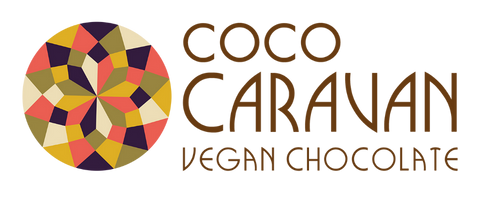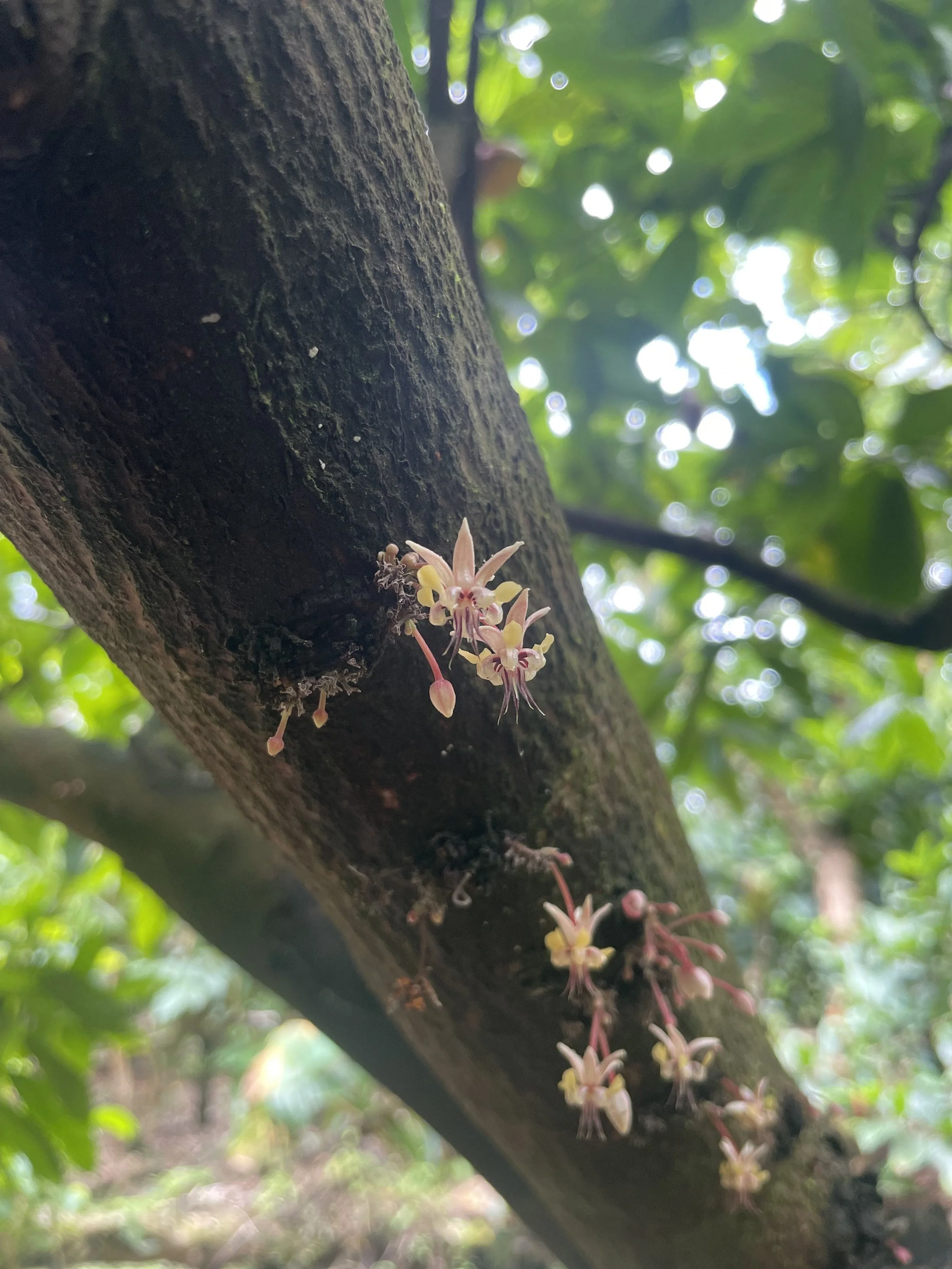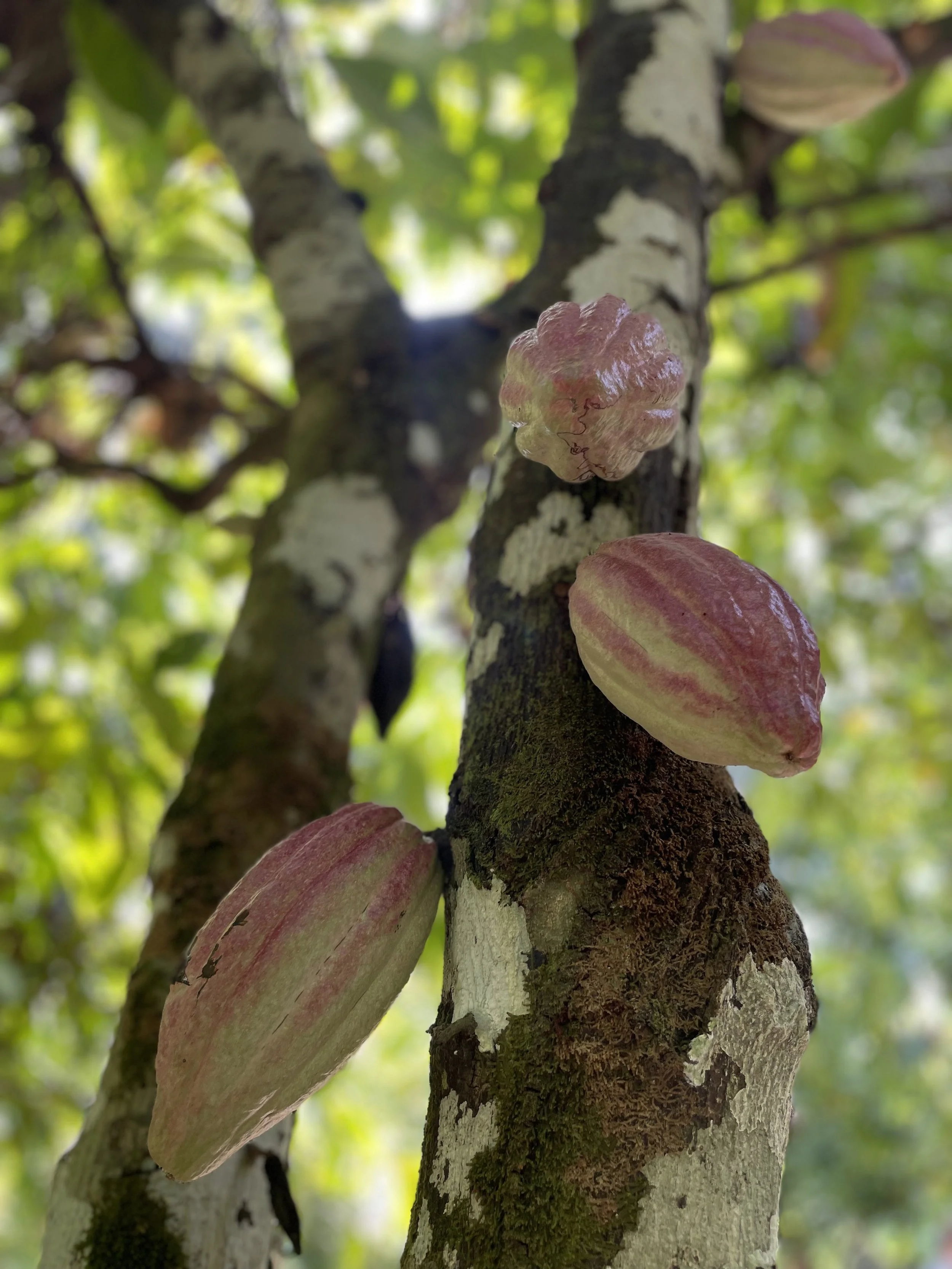Our Cacao
Cacao’s story begins deep in the rainforests of the Upper Amazon, in regions that are now Ecuador, Peru, and Colombia. This is where humans first discovered and began cultivating the cacao tree thousands of years ago. Over generations, cacao gradually spread north to southern Mexico and south to northern Bolivia, carried along rivers, trade routes, and by local communities. Today, cacao still thrives only within about 20 degrees of the equator—a narrow tropical band where warmth, rainfall, and fertile soils allow this remarkable tree to flourish.
Trees
Cacao trees prefer the gentle shelter of forest canopies. Typically, they grow between four and eight meters tall, hidden beneath taller trees that protect them from harsh sunlight. Across the tropical belt, cacao flourishes in many ecosystems, from dense rainforest to more open woodlands. This diversity has created an extraordinary range of cacao genetics, giving each bean the potential for unique, complex flavours shaped by its forest home.
How Cacao Grows
Cacao grows in many environments—from wild forests to large farms. Some our beans, like those from Bolivia or Mexico, come from wild trees and carry the rich complexity of untouched ecosystems.
Cacao that we don’t really use are cultivated on plantations, often as a single crop, which can limit the natural biodiversity.
Agroforestry offers a harmonious alternative. Here, cacao grows among other plants—cassava, bananas, hardwood, fruits, and spices—creating a mini-forest. The cacao absorbs subtle notes from its neighbors, infusing beans with hints of citrus, coffee, spice, or banana. This method not only produces nuanced flavours but also supports biodiversity, soil health, and sustainable livelihoods for farmers.
Harvesting and Fermentation
Cacao pods grow directly from the trunk and lower branches of the tree, a curious and striking feature and making it easier to harvest.
Harvest happens twice a year, with one big harvest and one small one. Pods are carefully cut to avoid damaging flowers that could produce the next crop.
Once collected, pods are sorted and the beans extracted from the pods covered in their sweet, fruity pulp.
The beans then undergo fermentation, the magic step that develops characteristic flavours. Some small-scale farmers use heap fermentation where they pile beans on banana leaves. Most commonly used are larger farms use wooden boxes.
Natural yeasts and bacteria work together during fermentation, while skilled farmers monitor the process with both intuition and instruments, ensuring the beans reach the perfect stage.
After fermentation, the beans are dried in the sun, allowing flavours to deepen slowly over one to three weeks.
Fully dried beans are packed into hessian bags, ready to travel from farm to factory. This careful journey—from forest to harvest, fermentation to drying—is what allows each cacao bean to reveal its full potential, forming the foundation of the exceptional chocolate we create.




